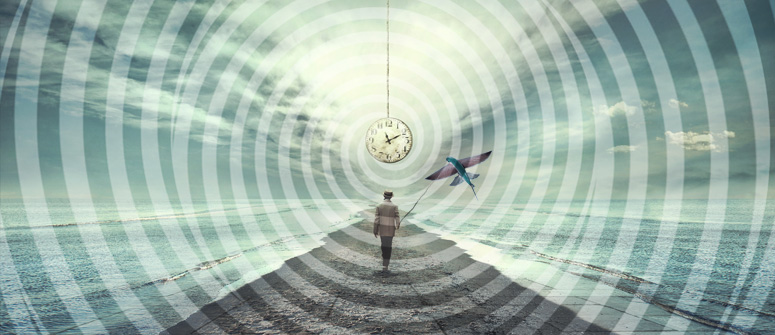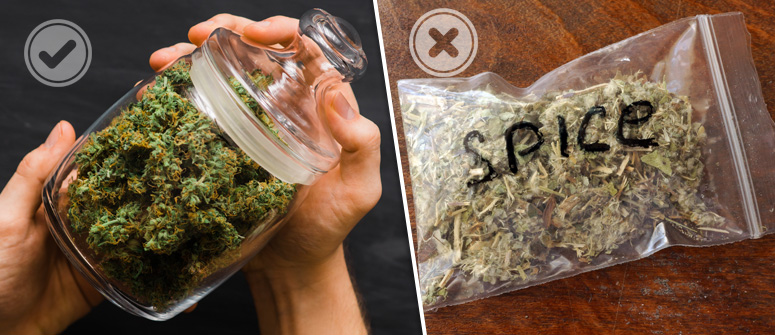Does cannabis cause hallucinations?

Cannabis impacts the brain but is it a hallucinogen? The answer seems complicated but actually it's just a simple no. More at CannaConnection!
The question about hallucinations and pot has been around for a long time. The idea that marijuana alters perceptions is one thing. It clearly does that. However, is it possible that cannabis causes hallucinations?
The short answer is no. However, cannabis could theoretically cause a distortion in perception. There is a difference. Cannabinoids also work differently than drugs like shrooms and LSD.
HOW DID THIS CONVERSATION GET STARTED IN THE FIRST PLACE?
Cannabis as a drug has been around for thousands of years. Inevitably, humans started to write down observations about their world. Cannabis ended up being a popular topic. The drug has long been used as medication. However it has also been integrated into cultures in other ways. This includes both religious ceremonies as well as other kinds of rites.
This has often been described, at many times in history, as motivation for either acting strangely, or differently. This is even more the case when cannabis use has been described by foreigners. Especially when encountering the drug and a new culture for the first time.
For example, the Scythians, a pre-medieval nomadic culture, used cannabis to prepare themselves for battle. Their influence, as horse-bound tribes, helped spread cannabis and knowledge of the drug from Asia to Europe. As a war drug, cannabis has been associated with “assassins” ever since. Starting in the earliest descriptions of the tribe.
Later on in human history, the idea that cannabis caused people "hallucinate" was popular fodder for prohibitionists. The by now classic film “Reefer Madness” was just one example of this kind of propaganda. According to this line of “logic,” smoking cannabis caused people to dance to jazz. And have sex with people of another colour. Cannabis was also specifically associated with mental illness. Specifically, the kinds where perception is permanently altered.
That association, sadly, has persisted for much of the last century. Biomedical science can provide far better explanations than old wives’ tales.
WHAT IS A HALLUCINATION?
A hallucination is commonly defined as a trick played by the brain. The individual believes that they are in a situation that is not “real” to anyone else. Further, the world in which the hallucinating individual now operates is usually in some way drastically different than the norm.
However, this does not always mean that the individual is aware of where the hallucination begins. Or ends.
Hallucinations are caused by malfunctions in the way the brain processes information. This includes conditions like psychosis and schizophrenia. Individuals suffering from these conditions believe certain things, or see certain things, because of brain activity which is structurally faulty.
Hallucinations caused by drugs, however, are different. For starters, the impact only lasts for as long as drugs are active in a user’s body.
WHAT IS ALTERED PERCEPTION?

Again, these are tough terms to specifically define. A hallucination is obviously also altered perception. However the easiest way to explain this is in terms of degree. A hallucination in other words appears to be “real.” Altered perception also means that the person is aware of the difference. In other words, if they see something strange, they know it is.
Other drugs or substances can also alter perception without causing hallucinations. This is also sometimes referred to as hallucinogenic affects. Absinthe, for example, can alter perception. Toulouse-Lautrec apparently was inspired to create green-tinged paintings thanks to his imbibing of the same.
Cannabis users who also report inspiration, could be termed as having their perception altered by the drug.
Technically, however, this is not a hallucination.
THE SCIENCE
The difference between hallucinogens and other drugs starts with the basics. Cannabinoids are different from psychedelic substances known as serotonergics. They act in different ways on the brain. Serotonergics are found in LSD, mushrooms and mescaline.
THC and other active compounds in cannabis, bind to receptors on the end of neurons in the body and brain. They alter the way information is transmitted between those neurons.
This in turn affects areas of the brain where there are high concentrations of these receptors. These parts of the brain also regulate movement, appetite, sleep and higher cognitive functioning. They also alter ways of thinking. However, they do so in ways that tend to mitigate anxiety, insomnia or pain perception.
In direct contrast, serotonergics act on serotonin. This is a chemical found in the body that is believed to regulate feelings of happiness. Psilocybin and lysergic acid – found in LSD and shrooms - bind to serotonin receptors in the body. In fact they do this so well that they can shut out the body’s own serotonin. While this is not a direct reason for why this can cause hallucinations, it is a clue. Recent imaging technology has shown that someone using LSD uses multiple areas of their brain at once. Normal brain functioning utilizes just the visual cortex.
In other words, it appears that serotonergics literally alter the way your brain sees things by activating multiple parts of the brain at once. Further, it appears that the serotonin used to do that comes from the drug. Your natural serotonin may in fact be blocked or partially blocked.
Cannabinoids, in direct contrast, may alter perception slightly. They do not stimulate multi-channel processing in the brain.

The one wrinkle in all of this of course, is so-called “synthetic cannabis products” like 'Spice' and 'K2'. These are different from pharmacologically created synthetic cannabis (such as dronabinol). They are often sold as club drugs.
These synthetics do in fact contain strong stimulants which bind to the brain’s cannabinoid receptors. They do so powerfully. So powerfully in fact, that these could in fact cause visual, auditory or olefactory hallucinations.
BLURRY VISION, TAINTED DRUGS AND OTHER SIDE EFFECTS
There is absolutely no doubt that in some people, cannabis can cause blurred vision. This is because cannabinoids work on the optic nerve directly. In turn this could certainly cause light perception and other visual distortions.
This is also not a “psychedelic” impact. Neither are the impacts of taking cannabis with certain kinds of pharmaceuticals. This includes SSRIs (antidepressants), blood thinners and Viagra.
Taking such drugs with cannabis can have serious implications. These can also impact not only vision but has other detrimental outcomes, including internal bleeding.
However, there is another way that you might have experienced a psychedelic experience when you ingested weed. Street weed can sometimes be laced, with substances that cause hallucinatory effects. This is one of the biggest reasons for legalization. Regulated weed is free of these kinds of contaminants.
And last but not least, remember that cannabis does have other side effects that can be physical. This includes sweating, increased heart beat and fatigue. That is because cannabis works directly on the central nervous system.




